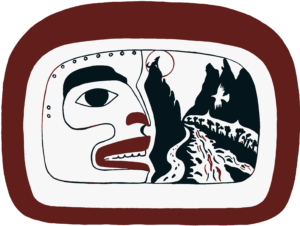Nakina Trail
Restoring the historic Nakina Trail.
![]() Nakina Trail
Nakina Trail
The T’akhu  Tlèn Conservancy supports the maintenance of the historical Nakina Trail. The Nakina Trail is of great cultural significance to the Taku River Tlingit First Nation since it remains the only overland route from the interior boreal plateau into the Taku River Watershed. Historically, Tlingit traveled the trail each year to connect with families residing in the Taku River Watershed and to harvest the abundant wild salmon found in tributaries of the Taku River. The enforcement of Government Indian Reservations significantly reduced the use of the Nakina Trail and led to parts of the trail becoming overgrown. However, the trail was reopened in 1998, based on direction from the TRTFN Elders Council, and continues to be an important symbol of cultural revitalization for the Taku River Tlingit people.
The Nakina trail starts at Kuthai Lake, south of Atlin, and leads to a historic Tlingit village site (Canoe Landing) at the confluence of the Nakina and Sloko Rivers. Kuthai Lake is an important spawning area for sockeye salmon and the TRTFN operate a salmon monitoring camp here. This camp provides a comfortable starting point to the trail, and a unique place for hikers to learn about salmon and Tlingit land stewardship.
Kuthai Lake is reached by driving south from Atlin about 38km to the O’Donnell River. From the O’Donnell, an ATV track leads 12km to Kuthai Lake. Hikers usually park at the O’Donnell, ford the river or take the cable crossing, and hike along the ATM track to Kuthai Lake. From Kuthai, the trail leads through open boreal forest, through meadows and along a series of small lakes before dropping into the Sloko River drainage. Here the vegetation changes; certain boreal species disappear and hikers enter a transition zone influenced by the coast. Devil’s club dominates the forest under story. The trail crosses a number of creeks, cuts through rocky gullies, crosses avalanche paths, and traverses below a talus slope before descending into the Sloko drainage. Due to the challenging terrain and vegetation that grows quickly, the trail needs to be frequently maintained so that it remains accessible for hikers.


